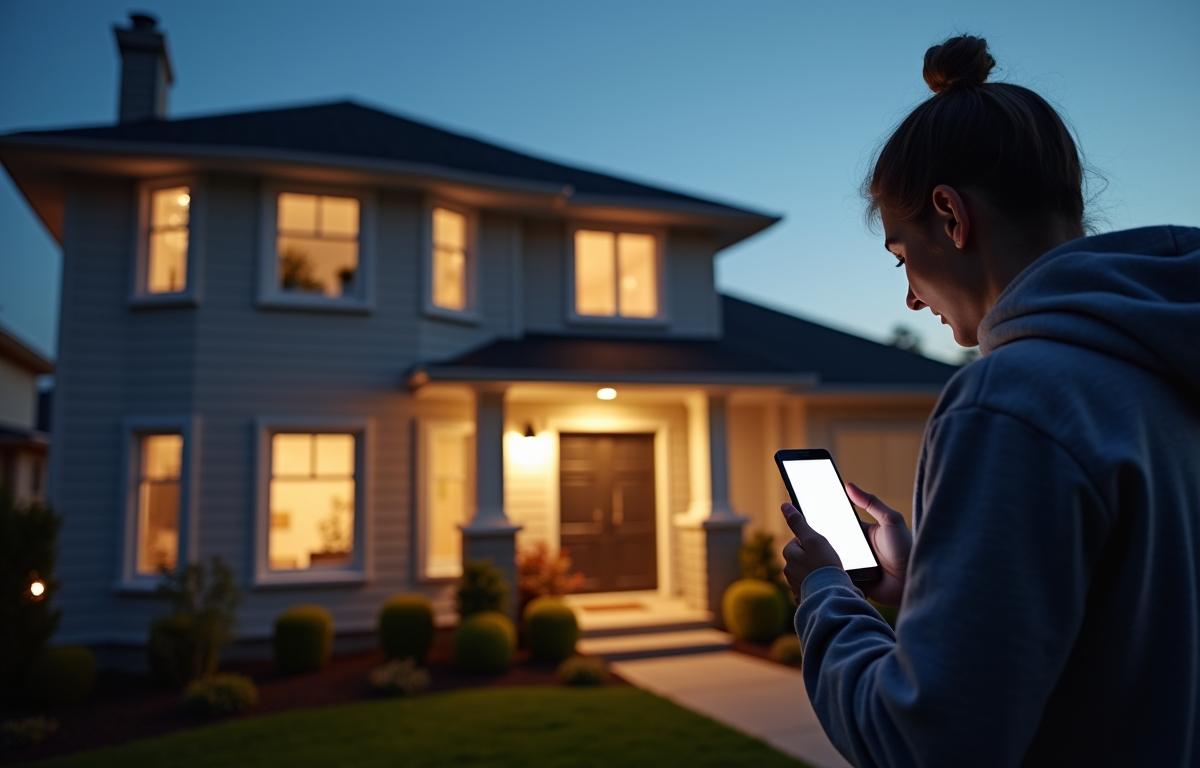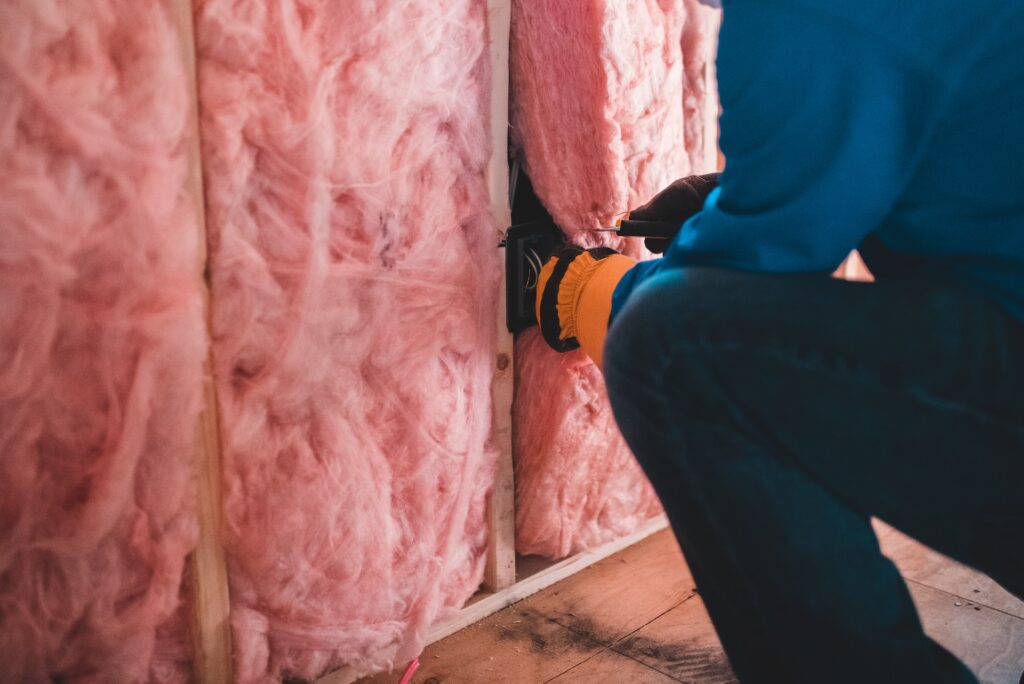For those considering home safety, are DIY security systems genuinely effective alternatives? It’s become more common to see homeowners installing cameras, sensors, and alarms on their own, thanks to the growing availability of user-friendly devices. Many find comfort in having direct control over the process, while also enjoying the chance to learn about new tech. Yet, some people wonder if a self-installed system truly matches the effectiveness of professional setups. Below, we explore key points that can help you decide if a do-it-yourself approach is a suitable choice for your unique circumstances.
Changing The Way We Secure Our Homes
Home security used to mean burdensome wires, big control panels, and a reliance on costly experts. Nowadays, technology has democratized the industry, making it more accessible. Wireless devices, smartphone alerts, and intuitive apps have simplified a once complex process. A homeowner can order a kit online, set it up with minimal fuss, and instantly have a functioning security system.
Many put their trust in a piecemeal method too. They get a motion sensor here, a camera there, and a doorbell camera for the front porch. By mixing and matching devices, it’s possible to achieve a strong level of security, often at a fraction of the price of a custom professional option.
Lower Costs And Greater Flexibility
One of the biggest draws of installing your own home security equipment is the cost factor. Service providers frequently charge monthly fees plus large setup costs, which can really add up over the years. When tailoring a DIY approach, you choose what to purchase and how to expand later. This flexibility allows you to start with essentials like door sensors and a basic alarm then upgrade to smart home features such as remote lighting controls or integrated smoke detectors.
You’re also not tied down to long-term commitments. Some individuals prefer to move between cities or rearrange their living spaces. Having a system that’s easy to remove and reinstall elsewhere can offer a new kind of freedom. When your circumstances change, a self-installed plan can quickly adapt right along with you.
Smart Home Components On A Budget
It’s hard to talk about security without mentioning smart home technology. Several popular brands provide components that link with voice assistants and smartphone apps. That means you can arm or disarm your system completely from your phone, and even integrate real-time notifications. These add-ons are no longer just luxuries for tech enthusiasts; they’re becoming common staples for everyday homeowners.
A smart doorbell camera can keep you alerted about visitors when you’re away. A wide-angle camera in the living room can let you check on pets or kids in real time. By combining these elements, people gain more than just deterrence they enjoy everyday convenience and peace of mind. That kind of relief is tough to quantify, but it remains a significant factor when deciding on a new security setup.
Important Features To Consider
When planning a diy home security layout, there are a few standout features worth exploring:
• Camera quality: Crisp HD footage doesn’t just look good it also captures vital details.
• Motion detection: Timely alerts rely on accurate sensors that recognize movement but ignore false triggers, like pets.
• Remote access: Whether you’re away for the weekend or simply at work, the ability to check on your home is a major asset.
Paying attention to these elements helps you create a safety net that suits your specific household. It’s not about buying the most expensive gadgets; it’s about matching features to your home’s needs.
Installation Doesn’t Have To Be Intimidating
Plenty of people worry they’ll mess up the wiring or fail to place cameras in the correct spots. Modern systems, though, are designed to be user-friendly. In many cases, devices come with peel-and-stick backs or easy-to-use brackets. Apps guide you step by step, ensuring a minimal margin for error.
If you hit a snag, online reviews, tutorials, and community forums offer valuable tips. People happily share their experiences, recommend certain product combinations, and compare notes on what went well. By leaning on those shared experiences, even novices can develop confidence in their ability to manage the entire process.
The Value Of Proper Placement
Where you put your devices matters. For instance, an entry sensor does little good if placed too far from the door frame. Cameras pointing directly into sunlight can also lead to skewed images. The good news is that a DIY approach usually means you have the freedom to experiment. If you discover your camera angle isn’t picking up the driveway, you can reposition it. That flexibility becomes a real advantage over one-size-fits-all professional solutions.
Pairing sensors with cameras can improve reliability too. An entry sensor might trigger a camera to record for evidence. Likewise, a motion sensor could alert you to activity at odd hours. These coordinated devices create layers of security, making it harder for intruders to slip by unnoticed.
Ongoing Monitoring Options
A significant debate arises around whether a self-monitored system is enough. Some people want the added layer of professional oversight, especially if they’re often away from home. Many DIY-friendly brands do offer professional monitoring as an optional add-on. You could pay a monthly fee and let a control center take over if an alarm goes off.
Still, self-monitoring has its benefits. You get immediate alerts, can check the camera feed, and contact authorities yourself if necessary. By handling everything personally, you avoid more monthly charges. It’s a trade-off: more responsibility on your part, but also more control over how and when to involve assistance.
Emergency Response Times
Professional monitoring services might dispatch law enforcement faster, especially if you’re unable to respond. A self-monitored plan can be slightly less direct. You’ll have to notice the alert, verify the threat, and then dial emergency services. If you’re diligent with phone notifications, though, the difference can be minimal. For people who keep their phones handy and aren’t likely to miss alarms, self-monitoring remains a viable and cost-aware path.
Potential Drawbacks Of A DIY Setup
It’s essential to note that no approach is perfect. Some individuals find the setup process more complex than expected, despite the user-friendly claims. Putting a system together can take more time for those who prefer for everything to be done by someone else.
Maintenance can also demand personal effort. Batteries need changing, devices need occasional updates, and compatibility issues can pop up with different brands. If you’re not someone who enjoys tinkering or troubleshooting, the do-it-yourself aspect can feel like a hassle down the road.
Reliability And Quality Differences
Some low-cost security gadgets might not last as long as you’d hope. The market is flooded with budget-friendly devices, yet not all are created equal. There’s always a risk of buying something that malfunctions too soon or fails to deliver consistent performance. Reading reviews and choosing reputable brands might help minimize that concern.
It’s wiser to invest in a handful of quality items than grab the cheapest gear available. A reliable camera that rarely glitches can free you from constant troubleshooting. Similarly, a sturdy control panel or smartphone app can make everyday use a smoother experience. A few extra dollars spent upfront might save you from headaches in the future.
Recognizing The Real-World Impact
Plenty of homeowners testify that a do-it-yourself arrangement has effectively deterred criminals. Visible cameras alone can make a terrible target look less appealing to intruders. Studies have shown that obvious signs of security like stickers or yard signs can play a role in preventing break-ins.
This sense of empowerment resonates with many people. Taking ownership of one’s security can inspire a stronger protective mindset. That might mean being more proactive about locking doors, trimming shrubs near windows, or getting to know neighbors who can keep an eye on your property. In this sense, a self-installed system can create positive changes beyond the hardware itself.
Balancing Technology And Practical Measures
No gadget can replace plain common sense. Having effective locks, sturdy doors, and secure windows is still essential. Motion-sensing outdoor lights and well-lit walkways deter unwanted visitors. It’s about combining strong tech solutions with everyday habits that protect your perimeter.
When layering these measures, you’re setting up multiple barriers. An intruder would face everything from sensor-triggered alarms to a dog or well-lit yard. Even if they proceed, cameras capture faces and movements, potentially aiding law enforcement. This synergy can be more powerful than many realize.
Gauging The Right Choice For You
Think about your lifestyle, financial capacity, and comfort level with technology. If you relish the hands-on nature of learning new devices and want to save on monthly fees, a self-installed system might be perfect. For those who travel frequently or prefer leaving tasks to professionals, the additional expense of a professionally monitored solution can offer peace of mind.
Yet, you don’t always have to choose one path or the other. Some people start with a few DIY devices, then add partial professional monitoring over time. Others switch from one brand to another as they refine their setup. What matters most is that you feel confident in how well your home is protected, whether you handle updates yourself or rely on a trained team.
Fine-Tuning Your Security Over Time
One of the best parts of having a DIY approach is scalability. As budgets increase or as needs shift, you can adjust your system. Maybe you move from a small apartment with one camera to a larger home needing multiple cameras, plus window sensors on each floor. Continual adaptation can keep your safety measures aligned with your life stages.
Regular check-ins help as well. Review your camera feeds, test sensors, and update software. A quick check every month or so ensures your gear remains in good working order. That diligence can preserve the system’s effectiveness, giving you long-term results that rival many professional installations.
Making Your Decision
Whether a self-installation strategy measures up for you ultimately depends on your needs and comfort level. Some may find it just as robust as a fully custom, professional package. Others may decide the savings, flexibility, and sense of control justify the learning curve. With accessible devices and evolving technology, the gap between do-it-yourself and professional setups continues to narrow, making the DIY approach more appealing than ever.





Leave a Reply
You must be logged in to post a comment.